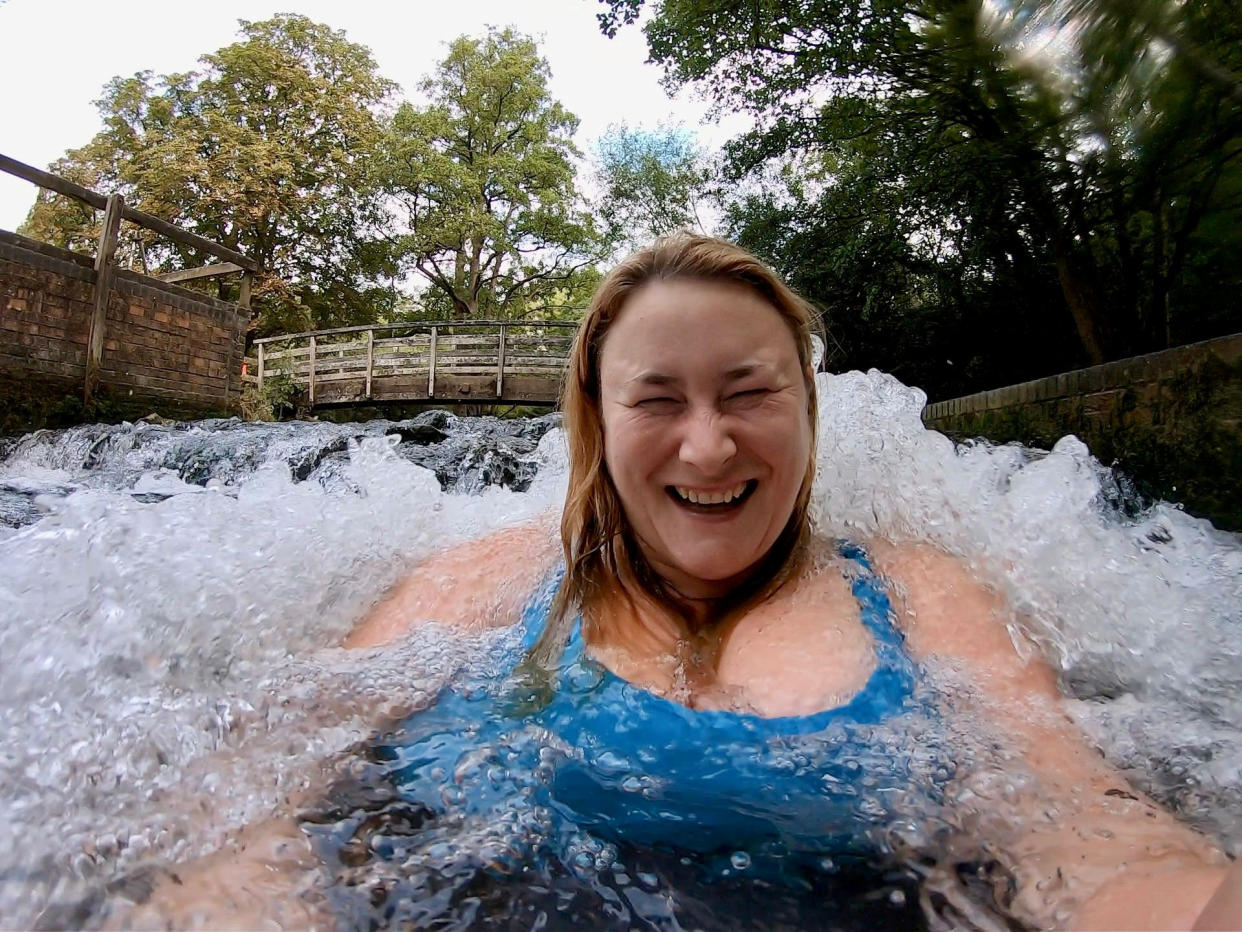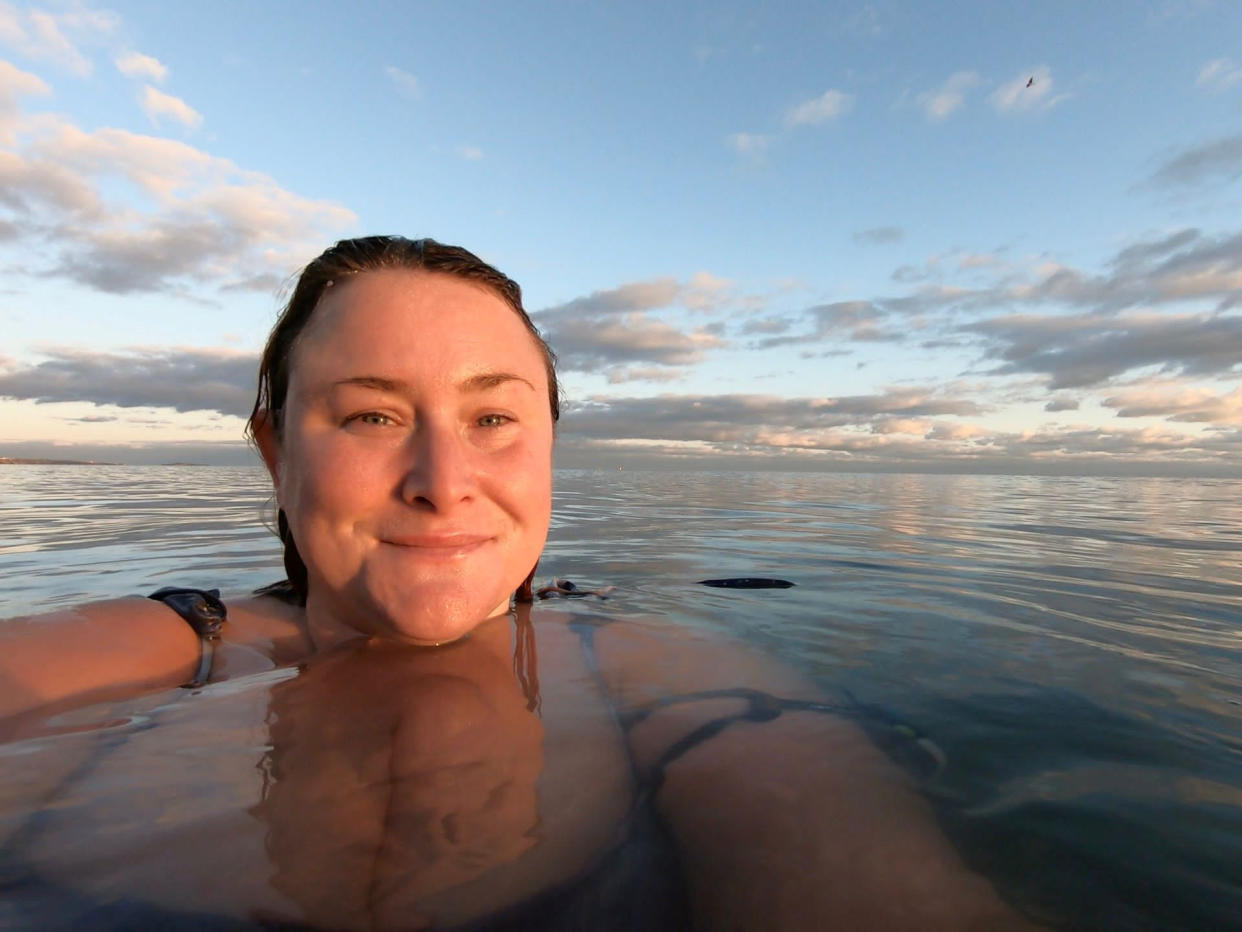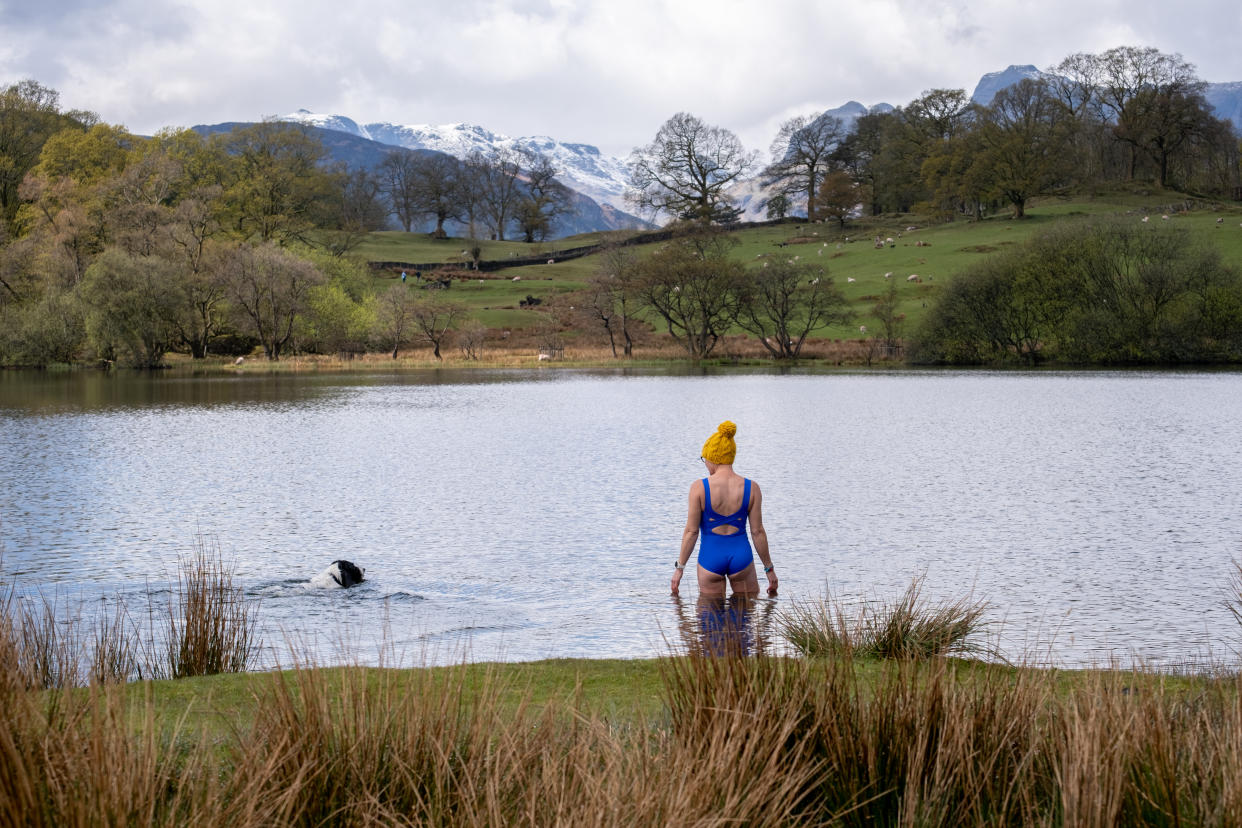Teacher endures freezing temperatures to go wild swimming every day for a year
A teacher has endured freezing temperatures to go wild swimming every day for the last year in nothing but a swimsuit. Rachel Whitfield, 41, from Hedge End, Hampshire, braved icy water in the middle of winter as part of her quest to raise money for her local lido.
Despite her challenge to swim for 365 days ending on New Year's Day, Whitfield has carried on swimming to raise more funds. But as well as raising over £1,600 for Hilsea Lido, she says she has experienced other benefits of wild swimming every day.
Read more: Fancy an icy dip in -20°C? Meet the woman who does it daily

"The cold water does something magic to you and makes you feel really fantastic," she explains.
"I've been swimming for my mental health - especially through lockdown - but my physical health has also benefitted."
Whitfield has also discovered a friendly swimming community which she says have been very supportive.
"I think we see a lot of the negative on the news but this was the real positive side of humanity," she explains. "Another plus point to wild swimming is the contact with nature. You see things swimming wild that you wouldn't otherwise - kingfishers, otters, seals," she continues.
"It can be quite magical, as can spending time in nature and seeing the cycle of the seasons."

Whitfield first went wild swimming four years ago at a swimming centre in Hampshire wearing a wetsuit, but soon discovered a local swimming group.
After joining the Hampshire Open Water swimmers, she swapped her wetsuit for swimming 'skins' - just a swimming costume - and has never looked back.
Whitfield, who lives with her husband Matt, 41, and their five children, said: "I first tried wild swimming as I was really poorly with an autoimmune disease called refractory coeliac. I was signed off work and desperate to get better when a friend mentioned that she was going so I went along."
Read more: Into the blue: The health benefits of ocean swimming

But the mum-of-five was quickly hooked.
"It's very addictive!" she says.
"I think I managed about 50 metres in my first swim. I started at the end of February which wasn't ideal as that is when the water tends to be the coldest.
"I was shaking so much that I couldn't get dressed but I was still beaming. The dopamine really kicked in and I was buzzing as I shivered!"

Whitfield says wild swimming is very different to swimming in a pool.
"No lanes, no funny smell of chlorine, and no lifeguards," she says. "You have to learn how to swim safely and how to get dressed really quickly."
After pledging to wild swim every day for a year, Whitfield managed to raise an impressive £1,600 for her local lido and hopes to continue to raise more money for the cause.
"Hilsea Lido is an art deco lido. I love it because it's inclusive and makes swimming accessible and because it's a real community hub," she explains.
"It's run by a team of dedicated volunteers who just can't keep up with it crumbling around them. They saved it from demolition and I felt I could just try and help a little to save this magical place."
During her period of fundraising, Whitfield says some days were harder than others.
"I swam in 2.3°C where we had to break the ice to get in and the ice actually cut my legs because it was so sharp!" she says.
"I actually like the cold - once you've been swimming a while, you almost crave it," she continues. "The cold isn't a problem, but I do get a bit fed up getting rained on and covered in mud."
Read more: Drowning doesn't look like drowning – the guide every parent should read

The rise of wild swimming
Switching the comforts of a warm pool for a chilly pond, lake, reservoir, cold-water lido or the sea, might not be everyone’s dream dip scenario, but recent figures from Sport England suggest more than 4.1million people are regularly donning their bathing suits to go open-water swimming.
Meanwhile a quick scroll of the hashtags #coldwaterswimming and #wildswimming finds social media awash with images of capped-headed and wetsuit clad swimmers of all ages, waxing lyrical about the virtues of taking a chilly dip.
So why are so many people, like Whitfield, discovering a love for swimming in freezing waters?
According to Laura Ansell, open water swimming coach and cold water specialist, wild swimming has likely seen a period of exponential growth because it remains very low cost to participate in, with local open water venues, beaches and rivers easily accessible for many to explore.
“Open water swimming is liberating, full of adventure, challenging and comes packed with loads of health benefits for both body and mind,” explains Ansell, who has a masters in sports science open water swimming and cold-water swimming.
What are the benefits of wild swimming?
Swim England says the health benefits of wild swimming could include better sleep, improved circulation and increased happiness.
“Cold water or open water swimming is widely reported to have many benefits to both mind and body, from strengthening the cardio-respiratory system and immune system to helping to lose excess weight through the cooling of the body and then the rewarming process (thermogenesis),” Ansell says.
“Cold water swimming also improves the body’s responses to stress, releasing endorphins which will help you relax, to sleep better and to feel calmer,” she adds.
Risks of wild swimming
While millions of people swim outside safely every year, the Outdoor Swimming Society warns there are a couple of things to be aware of before slipping into your wetsuit, as immersing yourself in cold water does come with certain risks including cold shock, incapacitation, cramp and hypothermia.
The society advises people to get expert medical attention before cold water swimming if they have a heart condition, high blood pressure, asthma or are pregnant.
It also advises you should only swim sober, and avoid cold water if you have a hangover.

How to get started
Ease yourself in and take a swim buddy
Of course, you don’t have to go the full hog of swimming in ice-covered water to enjoy winter swimming. "It by no means needs to be that extreme. But if you are going to start swimming in the winter, we advise you do so with caution and in the company of someone who is experienced," advises Vicky Allan co-author of The Art of Wild Swimming.
"If you don’t know a swimmer already, then join a local group, a list of which can be found on the Outdoor Swimming Society website."
Enter the water slowly
"Do not jump or dive in - and keep initial swims short until you start to acclimatise," says Allan.
Find your kit of choice
"What you wear is not, I believe, really all that important. I wear just a basic swimming costume rather than wetsuit, but if neoprene is what you fancy, go for it," says Allan.
Rather than spend lots of money on expensive kit, she suggests starting off with just the minimum and building up.
"There are a few small bits of equipment that can make your swim more comfortable," she adds. "Neoprene boots or socks make entry into the water, particularly over stones, less painful, and also keep feet a little warmer. Neoprene gloves are also popular for protecting extremities from the cold."
A bright-coloured hat or swim cap is a good idea - not just to keep your head warm, but also so you can be spotted easily out there in the water.
"Many swimmers wear woolly hats, though these are no good, if like me, you like to get your goggles on and dip under," Allan says.
"The brightly-coloured tow-floats that swimmers are often seen trailing behind them, are also good for making you more visible if you get into trouble."
Get used to the water
Make sure you acclimatise in the water to avoid cold water shock.
"As you enter the water it is important to regulate your breathing (do not gasp or panic)," Laura Owen Sanderson, founder of We Swim Wild and Wild Soul Swim, previously told Yahoo UK.
"Slowly enter the water (do not jump in). Once you are in up to your shoulders tread water for 1-2 minutes. The cold water shock response will pass after 2 minutes. Take this time to again regulate your breathing so it is calm. When you feel confident begin to swim."
Know when to get out
How long you stay in the water will depend on many factors, but the one key piece of advice is to listen to your own body and don’t stay in longer than is necessary.
"When you have been swimming for a while you will begin to acclimatise and you will naturally build up endurance," Owen Sanderson adds.
Follow the post-swim, keep warm rules
Whatever you wear in the water, however, it’s when you get out and what you do then that matters most when it comes to avoiding hypothermia.
"Bear in mind that your body temperature continues to drop, even after you’ve exited the water, so don’t wait till you actually feel cold to get out," Allan advises.
Making sure you get changed as quickly as possible is also important.
"A hot drink is always a good idea because it gets the heat to where it is needed most, your core," Allan adds. "And one of the most effective things for warming yourself is exercise - a few star-jumps or a bike ride home."
Choose the right conditions
Never swim after heavy rain. Wait 48 hours for the water speed and quality to clear.
You can find more tips here.
Additional reporting SWNS.


